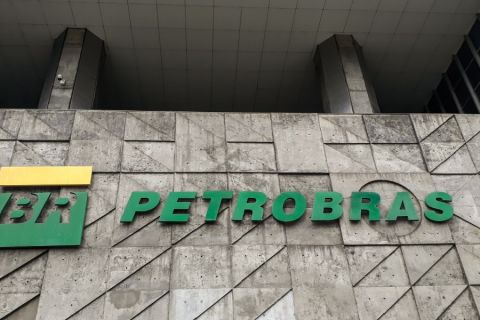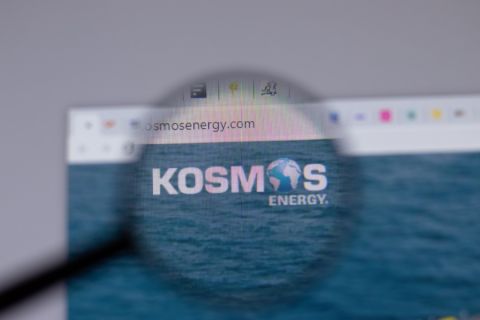Meeting the growing global demand for energy is requiring oil and gas operators to increasingly extract hydrocarbons from unconventional resources such as shale reservoirs. While North America has led the charge in shale resource development over the past decade, the U.S. Energy Information Administration (EIA) estimates that there are 287 Bbbl of technically recoverable crude oil and 187.9 Tcm (6,634 Tcf) of natural gas in shale plays in more than 41 other countries globally.
As they work to develop their own resources, shale developers in these countries are closely watching the lessons learned and technology developments advanced by U.S. shale operators. Considerable improvements to horizontal drilling technology and multistage stimulation have already been made in North America and will likely occur at a more measured pace. However, efficiency improvements are likely to continue at a faster pace for other technologies, including surface coiled-tubing (CT) equipment.
CT units have played a larger role in post-fracturing cleanup in recent years in U.S. shale developments, particularly in milling out frack plugs after a multistage hydraulic fracturing job (commonly known as plug and perf) in extended-reach horizontal wells (Figure 1). But as lateral lengths get longer—up to 3,050 m (10,000 ft) or greater—and the number of frack stages increases to 30 or more, service providers are challenged with developing CT technologies that increase the speed, efficiency and safety of post-frack cleanup operations such that the well can be brought onto production as quickly as possible.
Unconventional rigs for unconventional wells
Compared to conventional workover rigs, CT units have demonstrated reduced operational times, lower environmental impact and an ability to operate under live well conditions. However, performing intervention work on deep or long wells with conventional CT units is generally limited either by the dimensions (length or outer diameter) of the CT strings or by reel capacity. This is in direct conflict with the industry requirement to use larger CT diameters to help prevent helical buckling and tubing lockup where high wall-contact forces prevent the CT string from being advanced any deeper into the wellbore.

FIGURE 1. CT units have played a larger role in post-fracturing cleanup in recent years in U.S. shale developments, particularly in milling out frack plugs after plug-and-perf completions in shale formations. (Source: Boots & Coots, a Halliburton company)
Boots & Coots has developed a new CT system to address these challenges and improve efficiency and safety during frack plug mill-outs in shale wells.
The system is designed with the well-control package preassembled on a mast, thus improving operational efficiency, reducing rigup time and creating an overall safer rigsite environment compared to conventional CT applications.
The system’s design upgrades reside in three primary components. The first, an auxiliary mast unit, consolidates all well-control and power systems for the package on a single trailer, reducing wellsite footprint and emissions. The unit’s trailer base comprises front and rear outriggers and also carries the CT hydraulic power pack, a 110-VAC generator, mast unit with pressure-control equipment, a fuel tank and hydraulic-hose packages. By incorporating the preassembled well-control stack and mast trolley system, the unit reduces rigup time by as much as 50% compared to conventional CT systems and reduces the need for working under suspended loads while also reducing potential for dropped objects.
The second component, a quad-axle reel trailer, carries the reel with tubing, the operator house and tubing guide. This trailer contains several size and equipment upgrades to meet the operational requirements for plug mill-outs in longer extended-reach laterals. These include:
- Capacity for 6,098-m (20,000-ft), 2-in. CT, a significant increase over traditional reel capacities of about 4,573 m (15,000 ft) of 2-in. pipe;
- A maximum width of 2.6 m (8.5 ft) and height of 4.27 m (14 ft);
- A standard hydraulic start tractor (no wet kit);
- A maximum design loading of 25,000 pounds-mass (lbm) per axle;
- Sufficient accumulator capacity to operate 5?-in., 15,000-psi well-control equipment (WCE);
- Circuit capacity to operate up to three CT strippers;
- The ability to accommodate both current and in-design CT injectors on tilt system; and
- Enhanced display and control functions in the operator house.
New boom crane trucks
The third main component of the new CT system is a dedicated boom crane capable of meeting the greater lift requirements of larger sizes of WCE and riser sections for extended-reach lateral applications. Different cranes have been purposely sized to suit the requirements of various pressure-control equipment stacks. An 80-ton climate-controlled crane is capable of lifting 40,000 lbm 5?-in. well-control packages over a radius of 7.6 m (25 ft) with a boom extension of 26.7 m (87.5 ft). A smaller-capacity 60-ton crane is capable of lifting 35,000 lbm for 41/16-in. well control packages over the same radius and boom extension lengths (Figure 2).

FIGURE 2. The new CT package includes a 60-ton crane. (Source: Boots & Coots, a Halliburton company)
The relatively simple design of both cranes makes them suitable for operation by trained and certified CT personnel. Standardized controls of both cranes would enable personnel to operate either of the crane options.
Because the new boom crane trucks would typically be at maximum axle loading and could not support additional equipment, the upgraded CT system also includes an auxiliary equipment trailer that would carry, at a minimum, the CT unit’s power pack and all the WCE. The trailer features a base design that enables the entire well control stack to be carried preassembled on the trailer, which saves a considerable amount of rigup time.
Further rigup time savings are realized by mounting the equipment on a hydraulic mast that lifts the entire well control stack into the vertical position. The addition of a docking trolley system, which could be latched in position while making up bottomhole assemblies (BHAs), extends the mast concept further.
The use of a preassembled WCE, mast, and trolley system presents several benefits, including:
- Faster rigup and rigdown of CT equipment as the number of flange connection makeups onsite is drastically reduced. This also lowers the risks of finger injuries and dropped objects when making up the flanges;
- Reduced number of crane lifts as the preassembled well-control stack removes eight lifts from the rigup operation;
- Reduction of working under suspended loads. With the trolley docked and locked into the mast, preparing tubing end connectors and making up the BHAs can now be performed without the loads suspended below a crane; and
- Reduction of pinch and crush points, which is a natural extension of the reduced number of lifting operations.
Delivering tangible results
During 2013, more than 20 of the new CT packages were deployed in various shale fields in the U.S., where these demonstrated an average 50% reduction in rigup times while also improving safety metrics. In many cases, the units were rigged up on the wellhead with BHA ready for pressure-testing and running in hole in under three hours, with no recordable incidents to date.
Additional units, custom-designed for local requirements, are being deployed in the Middle East and Australia during 2014. As best practices continue to be shared across the world and local variations of these new equipment designs are developed to meet individual country requirements, the efficiency and safety benefits of the new CT system will be realized by the E&P community.
Recommended Reading
SilverBow Makes Horseshoe Lateral in Austin Chalk
2024-05-01 - SilverBow Resources’ 8,900-foot lateral was drilled in Live Oak County at the intersection of South Texas’ oil and condensate phases.
Petrobras Sending Nearly Half of Oil Exports to China
2024-04-30 - Conflict in the Middle East has enabled Brazil’s state-owned Petrobras to change the flow of its oil exports, with China being the primary beneficiary, followed by Europe.
Equinor Says EQT Asset Swap Upgrades International Portfolio
2024-04-30 - Equinor CFO Torgrim Reitan says the company’s recent U.S. asset swap with EQT Corp. was an example of the European company “high-grading” its international E&P portfolio.
E&P Highlights: April 29, 2024
2024-04-29 - Here’s a roundup of the latest E&P headlines, including a new contract award and drilling technology.
Kosmos Energy’s RBL Increased, Maturity Date Extended
2024-04-29 - Kosmos Energy’s reserve-based lending facility’s size has been increased by about 8% to $1.35 billion from $1.25 billion, with current commitments of approximately $1.2 billion.





